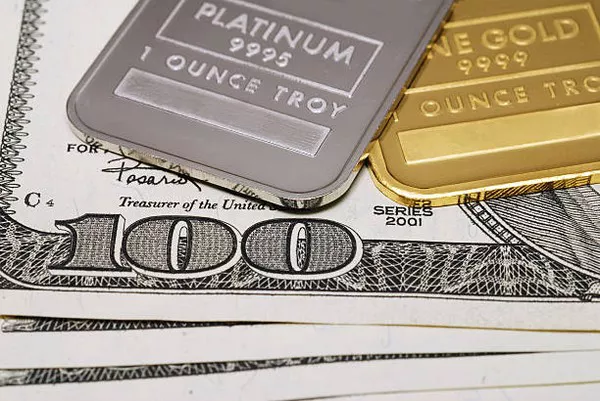Gold has long been a symbol of wealth and a cornerstone of financial stability. Its value, influenced by a multitude of factors, has fluctuated over time. As we look ahead, many investors and analysts are pondering a critical question: What will gold be worth in five years? This question is complex and requires a comprehensive analysis of various economic, geopolitical, and market dynamics. This article delves into the factors likely to impact gold prices in the coming years and provides insights into potential future trends.
Historical Context and Current Price Trends
To understand where gold might be headed, it’s important to consider its historical performance and current trends. Historically, gold has been a safe-haven asset, holding its value during times of economic uncertainty and inflation. The price of gold has experienced significant fluctuations due to various factors, including global economic conditions, geopolitical tensions, and changes in monetary policy.
As of 2024, gold prices have been influenced by a combination of persistent inflation, geopolitical instability, and shifts in central bank policies. After a peak in 2020 during the COVID-19 pandemic, gold prices have shown volatility, reflecting changing investor sentiment and macroeconomic conditions.
Economic Factors Influencing Gold Prices
Inflation and Deflation: Gold is traditionally seen as a hedge against inflation. When inflation rates rise, the purchasing power of fiat currencies declines, and investors often turn to gold to preserve value. Conversely, during deflationary periods, the demand for gold as an inflation hedge may decrease, potentially leading to lower prices.
Interest Rates: Central banks play a crucial role in determining gold prices through their interest rate policies. Lower interest rates make non-yielding assets like gold more attractive compared to interest-bearing investments. Conversely, higher interest rates can reduce the appeal of gold, leading to potential price declines.
Economic Growth: The overall health of the global economy impacts gold prices. In periods of strong economic growth, industrial demand for gold might increase, driving up prices. Conversely, during economic slowdowns, reduced industrial activity could put downward pressure on gold prices.
Currency Fluctuations: Gold is typically priced in U.S. dollars, so fluctuations in the value of the dollar can significantly impact gold prices. A stronger dollar makes gold more expensive for investors holding other currencies, potentially reducing demand. Conversely, a weaker dollar can boost gold prices.
Geopolitical and Geoeconomic Factors
Global Political Stability: Gold often benefits from geopolitical uncertainty. Crises, conflicts, and political instability can lead to increased demand for safe-haven assets like gold. In the next five years, ongoing geopolitical tensions, including issues related to major powers such as the U.S., China, and Russia, could drive gold prices higher.
Trade Policies and International Relations: Trade tensions and changes in international relations can influence gold prices. Trade disputes, tariffs, and sanctions can create economic uncertainty, leading investors to seek refuge in gold.
Central Bank Policies: Central banks hold significant gold reserves and their policies can impact gold prices. Central banks’ buying or selling of gold, as well as their monetary policies, can influence market sentiment and gold prices.
Technological and Market Developments
Gold Mining and Production: Advances in mining technology and changes in production costs can impact gold supply. If new discoveries or innovations reduce production costs, this could affect gold prices. Conversely, if production becomes more expensive, it could drive prices higher.
Investment Trends: The rise of gold-backed financial products, such as ETFs (Exchange-Traded Funds) and digital gold platforms, has increased accessibility for investors. Changes in investment trends and market demand for these products can influence gold prices.
Environmental and Regulatory Factors: Increasing environmental regulations and social concerns about mining practices can impact gold production and supply. Stricter regulations may increase production costs and influence gold prices.
Expert Predictions and Forecasts
Several analysts and financial institutions provide forecasts for gold prices based on their analyses of current trends and future scenarios. While predictions vary, some common themes emerge:
Bullish Scenarios: Many experts predict that gold will continue to be a strong investment due to ongoing inflation concerns, geopolitical instability, and potential economic downturns. Some forecasts suggest that gold could see significant appreciation if these factors persist.
Bearish Scenarios: Conversely, some analysts believe that gold prices could face downward pressure due to rising interest rates, strong economic recovery, and reduced demand for safe-haven assets. If central banks tighten monetary policy and inflation pressures subside, gold prices might struggle.
Moderate Projections: A middle-ground perspective suggests that gold prices may experience moderate fluctuations but generally trend upwards, reflecting ongoing uncertainties and demand for a stable asset.
See Also The Value of a Gold Krugerrand Coin
Conclusion
Predicting the future value of gold is inherently uncertain due to the complex interplay of economic, geopolitical, and market factors. While historical trends and current conditions provide a framework for understanding potential future movements, the actual price of gold in five years will depend on how these factors evolve.
Investors should consider the potential risks and opportunities associated with gold as part of their broader investment strategy. Diversification, ongoing analysis, and staying informed about global developments will be crucial for navigating the future of gold investments.
In summary, while we cannot pinpoint the exact value of gold in five years, understanding the key factors and trends provides valuable insights for making informed investment decisions. The interplay between inflation, interest rates, geopolitical events, and market dynamics will shape the future trajectory of gold prices, making it essential for investors to stay vigilant and adaptable.


